Crowntail Bettas are an exquisite species of freshwater fish that captivate the hearts of many aquarium enthusiasts. Their vibrant hues and elegant, flowing fins make them a joy to watch.
However, if you’re considering becoming an owner of one of these beautiful creatures, it’s important to note that they have specific needs and challenges that must be addressed.
In this guide, we’ll provide you with comprehensive information on how to care for Crowntail Bettas. Plus, we’ll share some useful facts and tips to simplify the process for you!
Quick Overview About Crowntail Betta
| Category | Information |
| Common Names | Siamese Fighting Fish, Betta |
| Scientific Name | Betta splendens |
| Adult Size | 2.5 to 3 inches |
| Lifespan | 3 to 5 years |
| Family | Osphronemidae |
| Origin | Southeast Asia |
| Temperament | Aggressive, territorial |
| Compatibility | Low with same species; Moderate with others |
| Tank Mates | Non-aggressive fish, shrimp, snails |
| Minimum Tank Size | 5 gallons |
| Habitat | Freshwater, slow-moving or stagnant waters |
| Color | Various (blue, red, purple, etc.) |
| Skin Type | Scales |
| Care Level | Easy to Moderate |
| Breeding | Egg-layers, bubble nest builders |
| pH Level | 6.5 to 7.5 |
| Water Hardness | Soft to moderately hard |
| Temperature | 75–80°F (24–27°C) |
| Diet | Carnivorous |
| Prey | Insects, larvae, small fish |
| Favorite Food | Bloodworms, brine shrimp |
Appearance Of Crowntail Betta
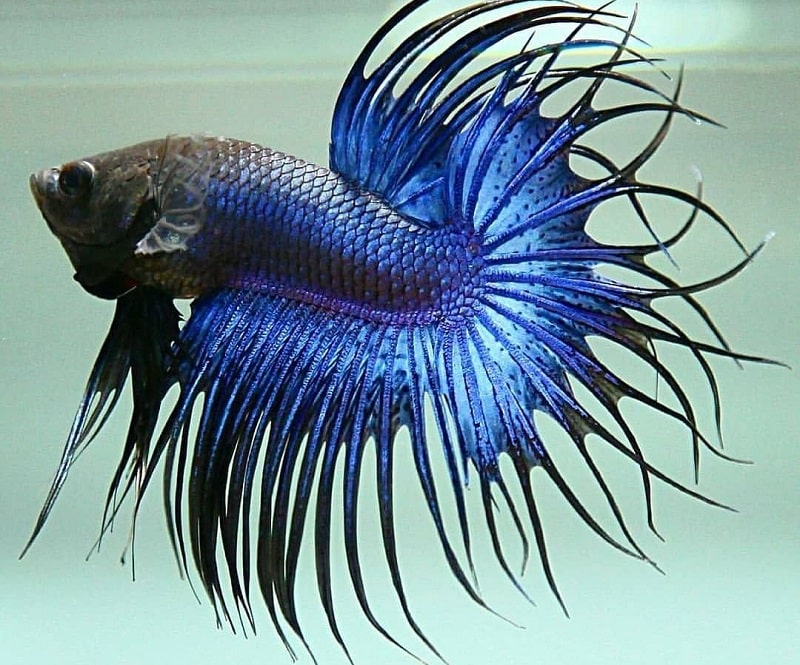
Crowntail Bettas have a long, slender body that gets smaller towards the mouth. Their mouth tips upward, which helps them eat food that floats on the water’s surface. Right behind the head, you’ll find flat gills. But if the fish gets upset or wants to defend its space, those gills will puff out to make the fish look bigger and scarier.
The real eye-catchers are their fins. Male Crowntails have a big tail fin that can be three times larger than their body. This tail fin looks like it’s part of the other fins on their back and belly, making the fish look even more impressive. The belly fin is pretty wide, which adds some extra flair. The back fin isn’t as wide but still looks great. It’s usually positioned further back to make the tail fin look even more grand.
What makes Crowntails special is the unique look of their fins. The skin between the fin’s bones is reduced, making each part of the fin stand out like spikes or a crown, and that’s how they get their name.
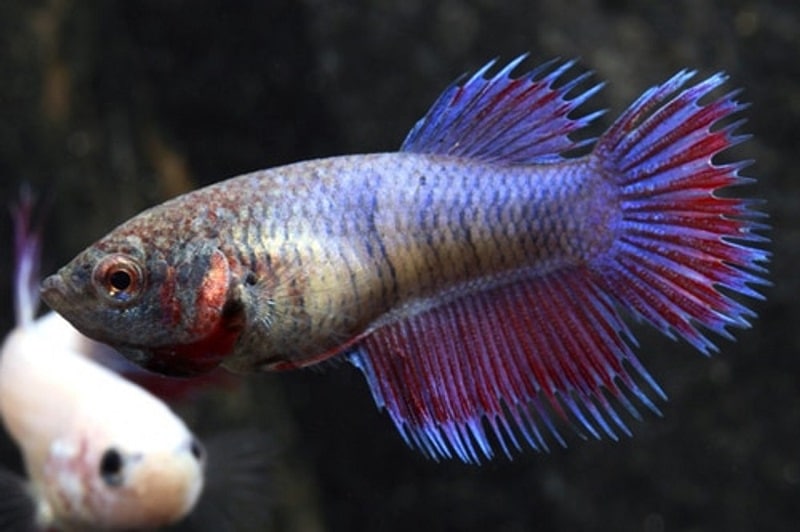
Female Crowntails also have these special fins, but they are shorter. They still keep that signature spiky look, though.
As for colors, Crowntail Bettas are really vibrant. They come in all kinds of shades like bright blues, reds, and purples. You might also see some with touches of green and a shiny, metallic look.
Crowntail Betta (Size And Lifespan)
The typical size for a Crowntail Betta is about 2.5 inches from the front of its face to the end of its tail. You might find some that grow up to 3 inches, but that’s pretty uncommon. When it comes to how long they live, Crowntail Bettas usually have a lifespan of around two to three years. They’re not the longest-living fish you can find, but each one brings its own special charm to your aquarium.
It’s important to note that a fish’s lifespan isn’t set in stone. Good care can help your Betta live longer, while stress or illness could shorten its life. The attention and care you provide really do make a difference. So if you want your Crowntail Betta to enjoy a long, happy life, staying attentive and committed to their well-being is key.
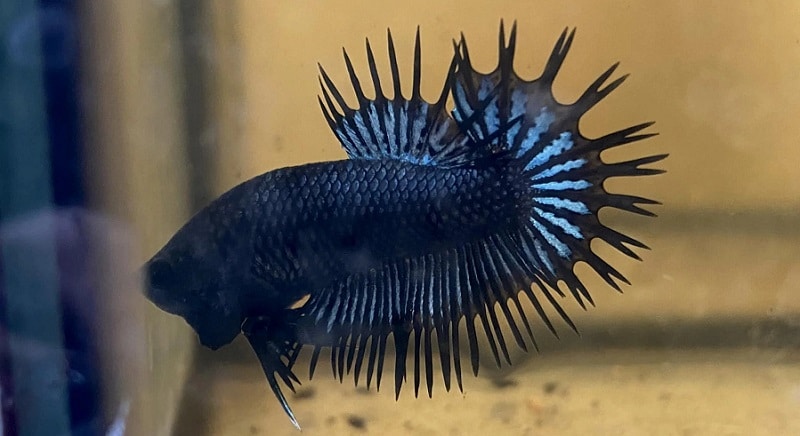
Crowntail Betta Types & Colors
Crowntail Bettas are truly a feast for the eyes, especially when it comes to their colorful tail fins. While red and blue are the most common hues you’ll find, these fish can also showcase rare and captivating patterns like opal or marble. The term “marbling” in the world of bettas describes a unique feature where the intensity of the color changes depending on the lighting.
So, if you have a marble-patterned Crowntail, you’ll notice that while blue is the dominant color, it can look different when the light hits it in various ways or when you look at it from different angles.
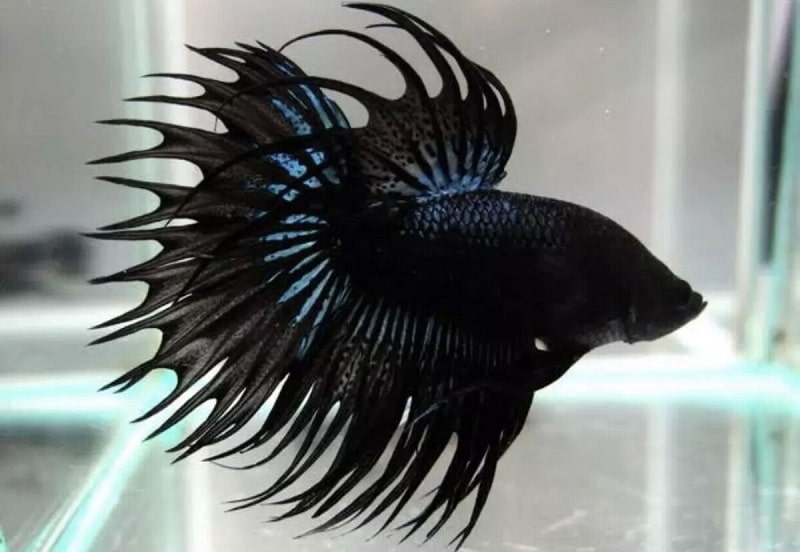
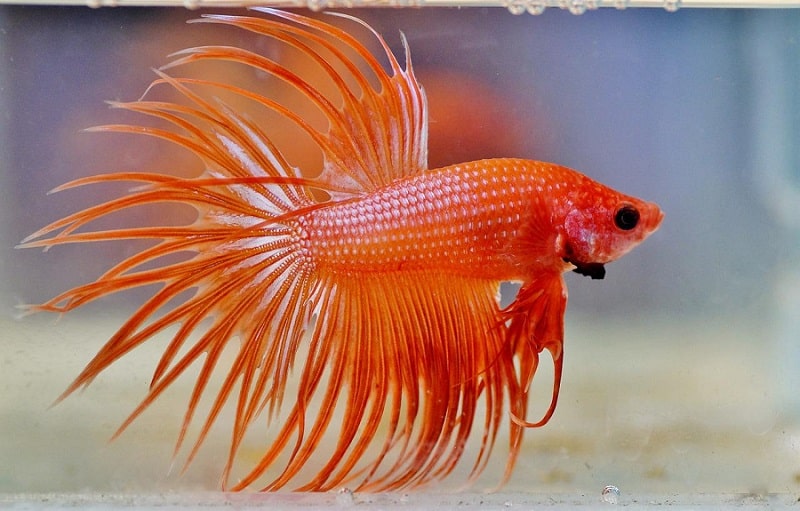
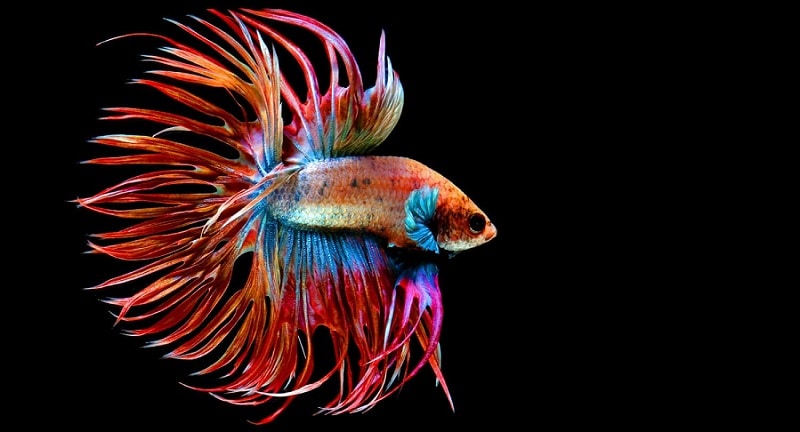
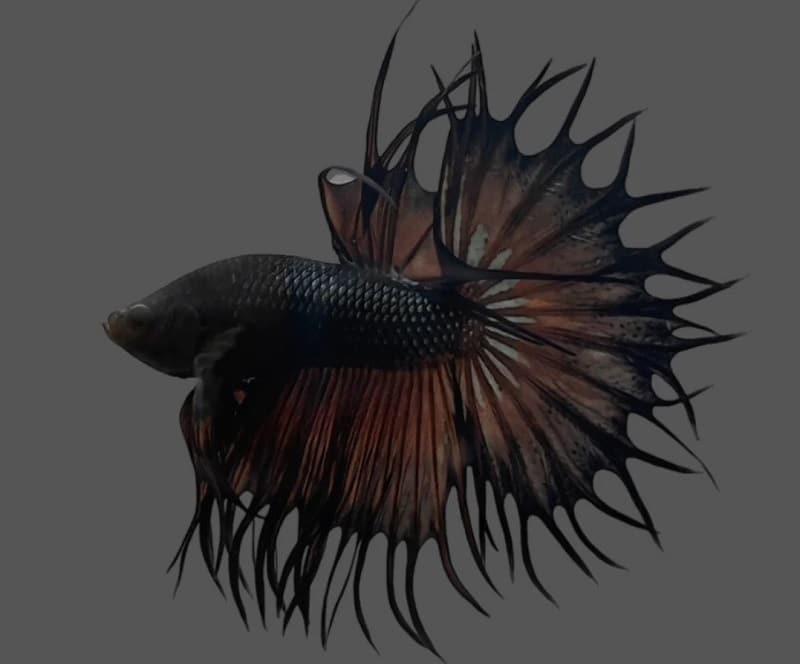
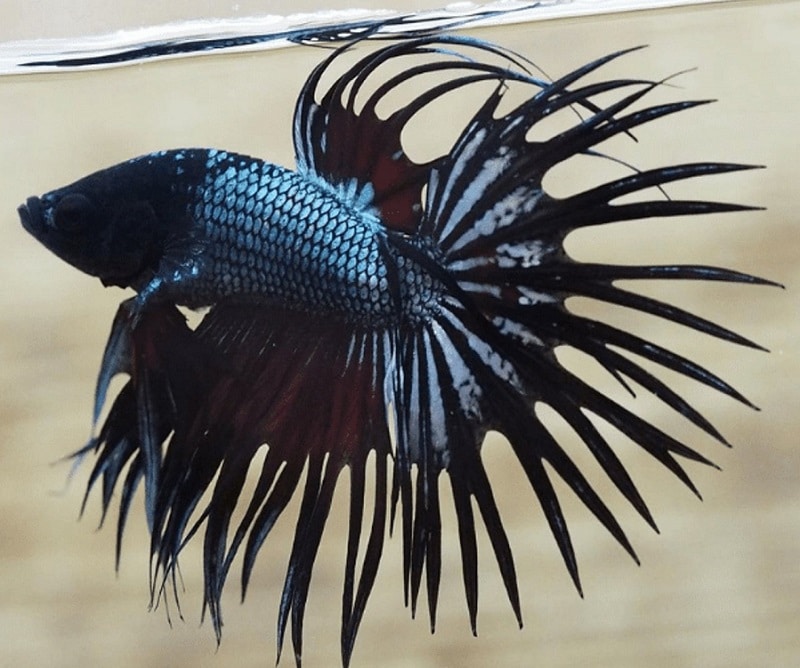
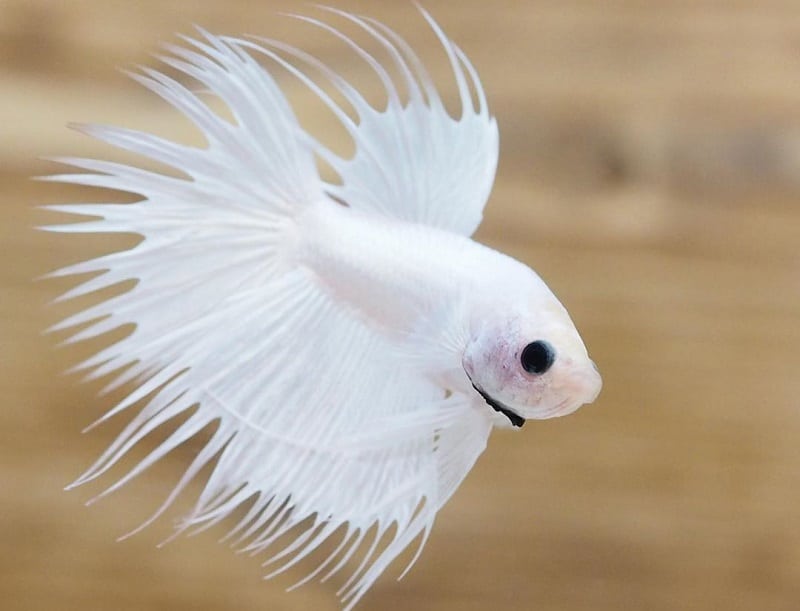
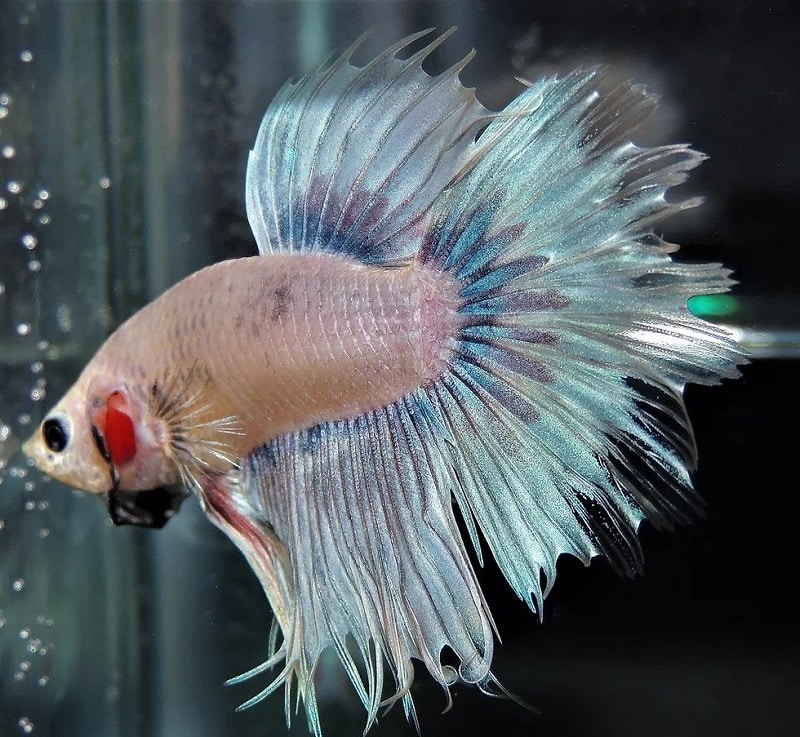
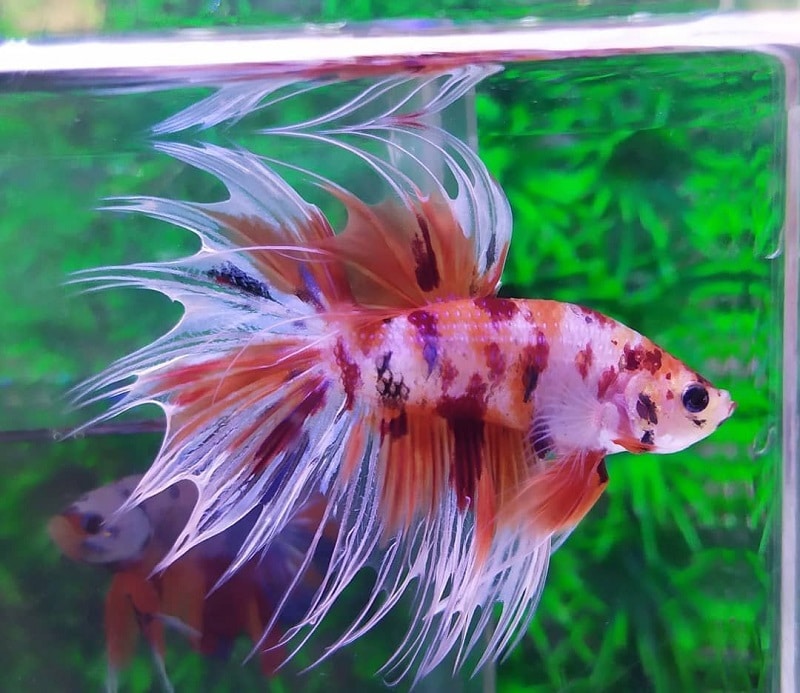
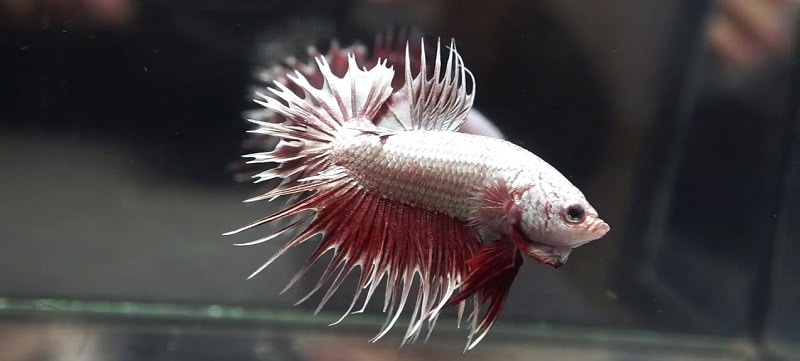
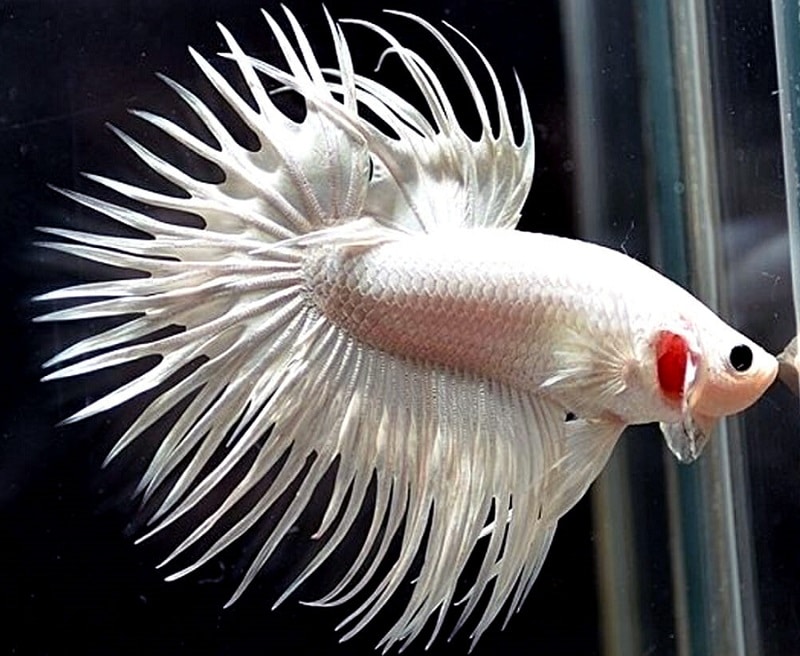
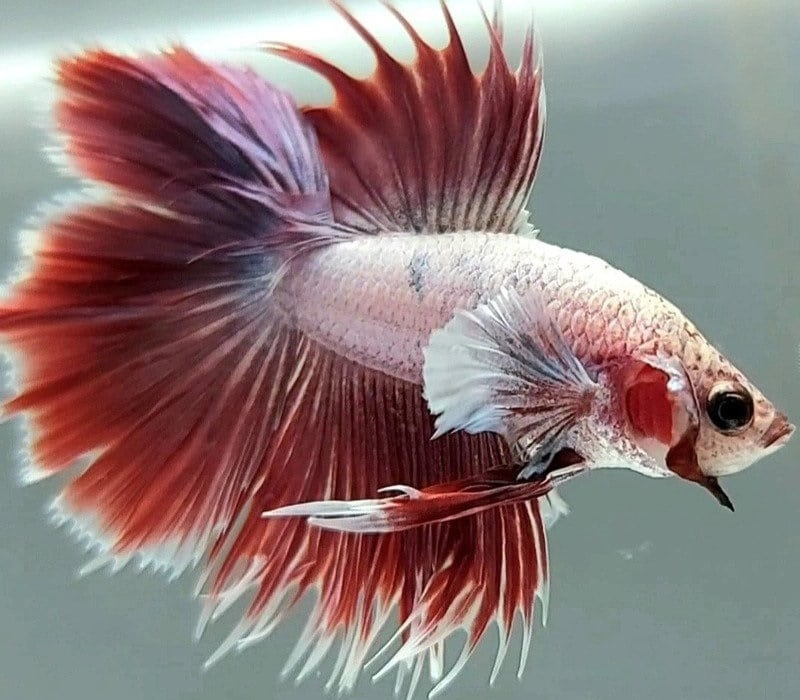
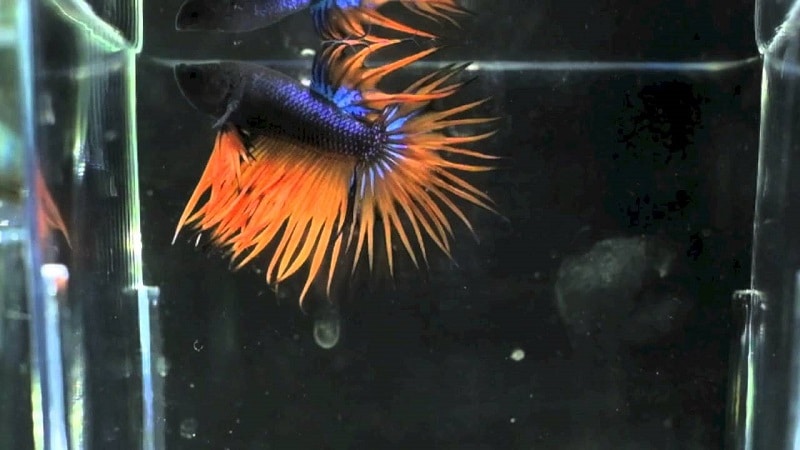
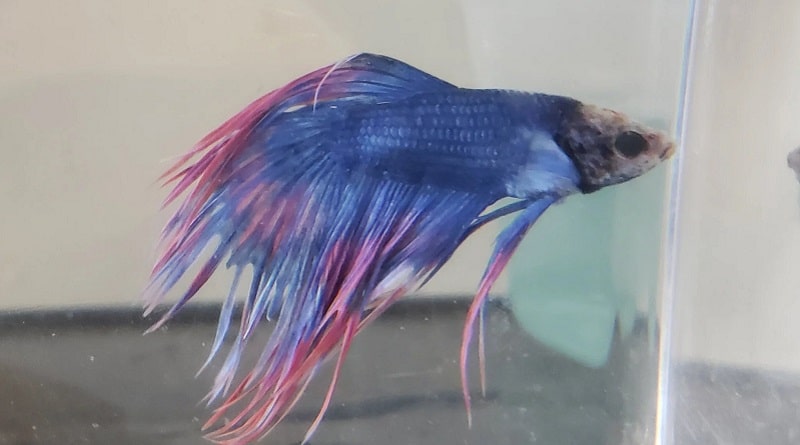
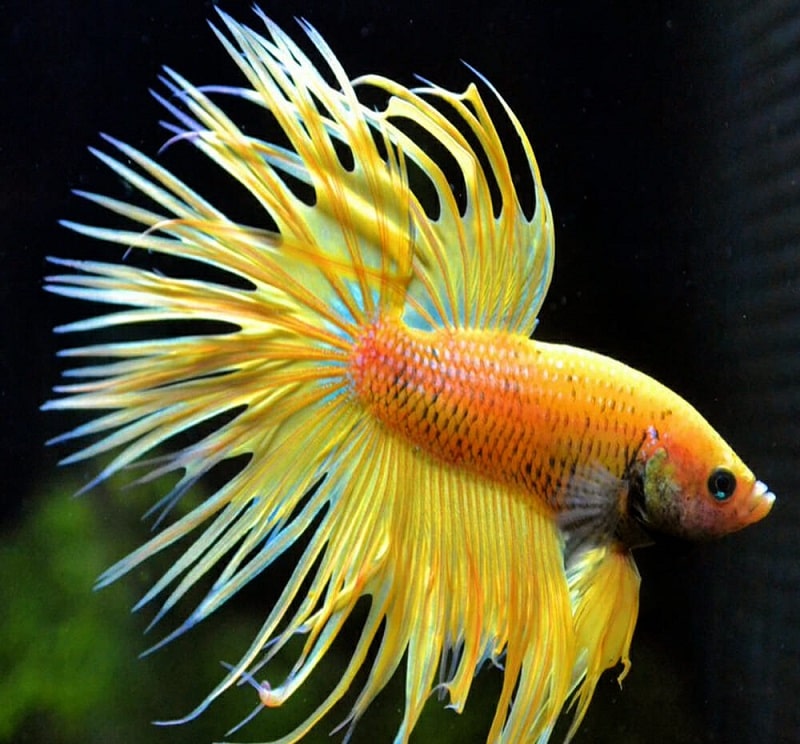
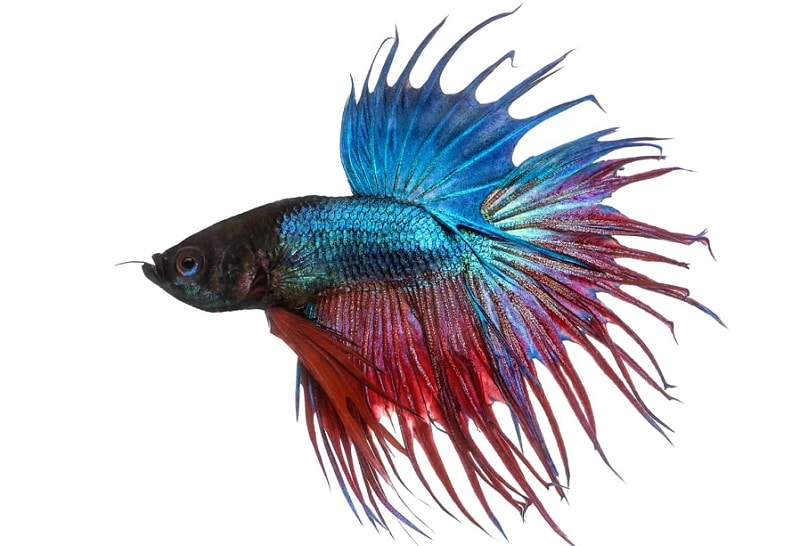
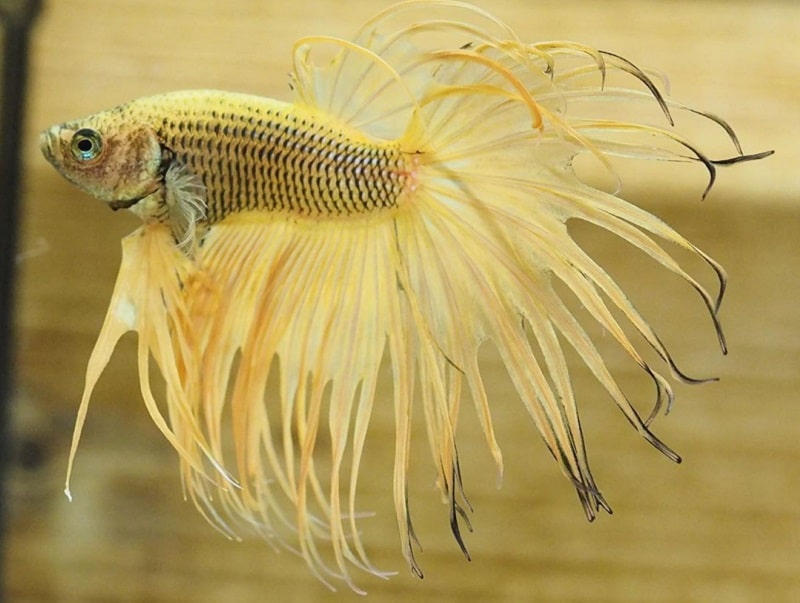
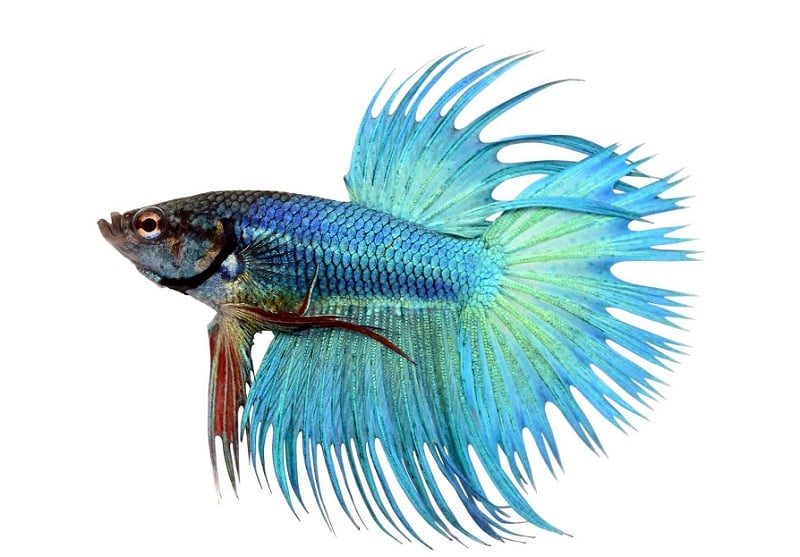
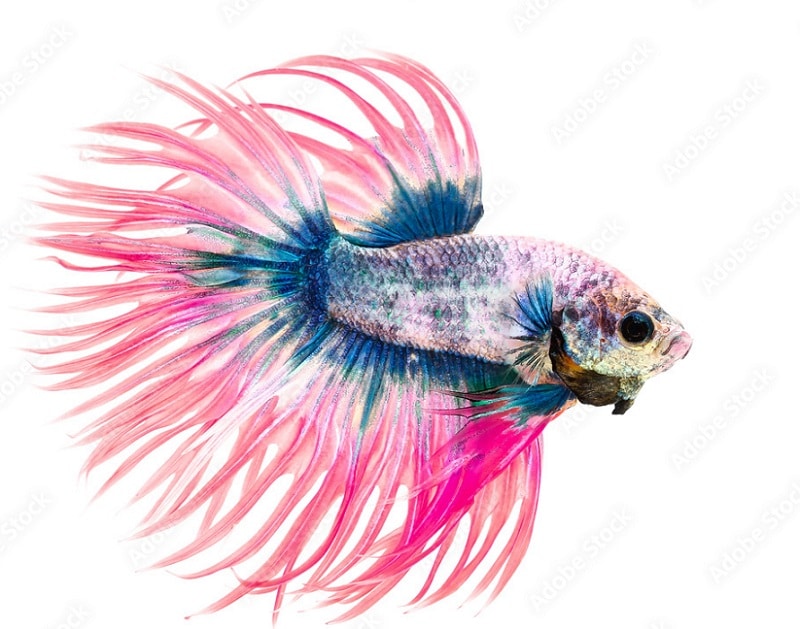
Crowntail Betta Female
Female Crowntail Bettas may have a more subdued finery compared to their male counterparts, but they are equally captivating. Their fins, although shorter, still exhibit that signature “crown-like” look, which adds to their allure.
Females usually sport a diverse palette of colors, although they may not be as vividly intense as the males. Don’t let their relatively modest appearance fool you, though; these females are full of personality and can be just as engaging to watch and care for.

Crowntail Betta Male
The male Crowntail Betta is a spectacle of nature’s artistry. Their most defining feature, without a doubt, is their extravagant tail fin, which can be as large as three times their body size.
This fin, along with their dorsal and anal fins, creates an almost continuous, flamboyant display. Color-wise, males often flaunt a striking mix of hues—reds, blues, and even rare patterns like marble or opal.

Their colors are not just beautiful; they’re dynamic, changing intensity depending on the lighting and the angle you view them from. If you’re looking to add a show-stopping centerpiece to your aquatic sanctuary, a male Crowntail Betta is an excellent choice.Health And Disease Prevention for Crowntail Bettas.
Health And Disease Prevention for Crowntail Betta
Keeping your Crowntail Bettas healthy involves more than just feeding them; it also requires a clean and stable environment. Regular water changes are a must to ensure optimal water quality. A balanced diet is also crucial to keep them thriving. Despite your best efforts, these captivating fish are susceptible to various health issues, including parasitic infections, bacterial problems, fin and tail rot, and fungal diseases, among others.
Here are some signs that your Crowntail Betta might be under the weather:
- Pale patches on their skin
- Clamped fins or frayed tails
- A noticeable drop in activity
- Quickened breathing rate
- White spots appearing on fins or scales
If you observe any of these symptoms, immediate action is needed. Typically, the affected fish should be quarantined while you administer the appropriate medication.
Being attentive to your Crowntail Betta’s health doesn’t just benefit the fish; it also helps maintain the balance of your entire aquatic ecosystem. By being vigilant, you can prevent illnesses or catch them early, thus reducing the risk of an outbreak among other tank inhabitants.
Basic Betta Fish Breeding
Male Crowntail bettas often create bubble nests at the tank’s surface, signaling their sexual maturity and readiness to breed. These nests are typically built near floating plants or objects. It’s advisable to wait until they are at least 6 months old before attempting breeding due to their aggressive nature, which can pose challenges for inexperienced breeders.
During the breeding ritual, the female should be introduced into the breeding tank briefly. She will lay fertilized eggs, which the male will carefully place into the bubble nest for protection. Once this is complete, the female should be promptly removed from the tank.
source: @MonchingsAquaWorld
See More:
- Betta Splendens Veiltail: Interesting Facts, Varieties, Colors (with Pictures)
- Betta Plakat: An Overview of The Species Colors (with Pictures)
- Rose tail bettas: Facts, Varieties and Colors (with Pictures)
Conclusion: Should You Get A Crowntail Betta?
The Crowntail Betta has gained immense popularity in the United States. Consider joining enthusiasts worldwide by setting up a small planted tank for these delightful fish. Not only are they enjoyable to care for, but they can also have a positive impact on your mental well-being.
Your Crowntail bettas typically grows to a maximum length of 3 inches and boasts a lifespan of 2-3 years, similar to other betta fish.
Undoubtedly, their striking caudal fins will provide continuous entertainment as these active freshwater tropical fish gracefully maneuver through their aquarium habitat.
While Crowntail bettas are sometimes known for their dominance and aggression, they can peacefully coexist with tankmates that prefer the lower levels of the aquarium.
With more than 25 different colors to choose from, don’t forget to give your Crowntail betta a unique and fitting name!
Do you currently have a Crowntail Bettas in your aquarium? Share your experiences with us in the comments section below. And be sure to explore further informative blogs from National Park Aquarium to deepen your aquatic knowledge and enjoyment.




